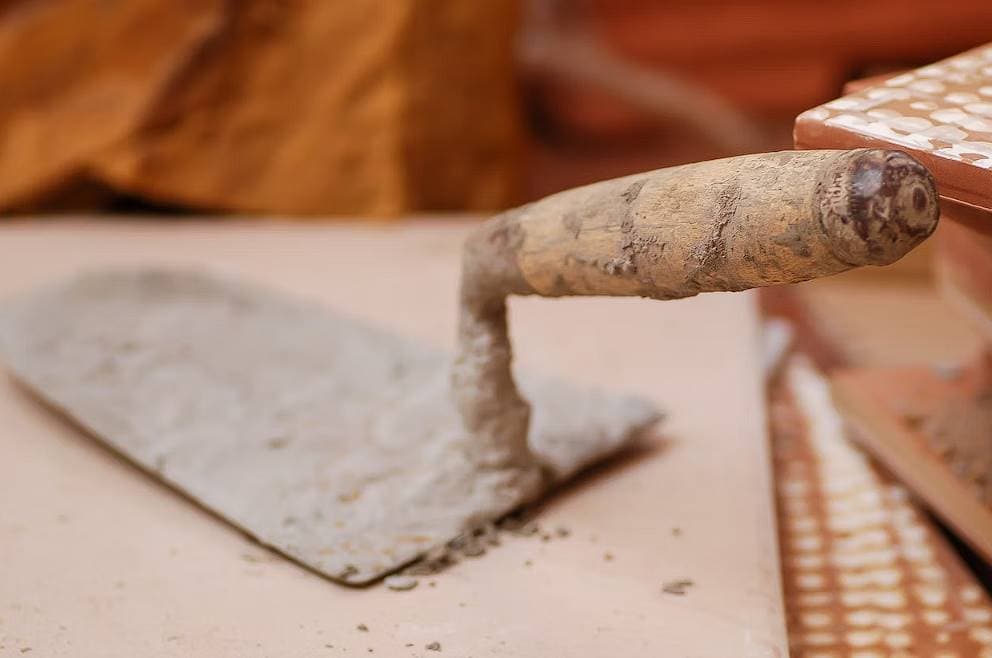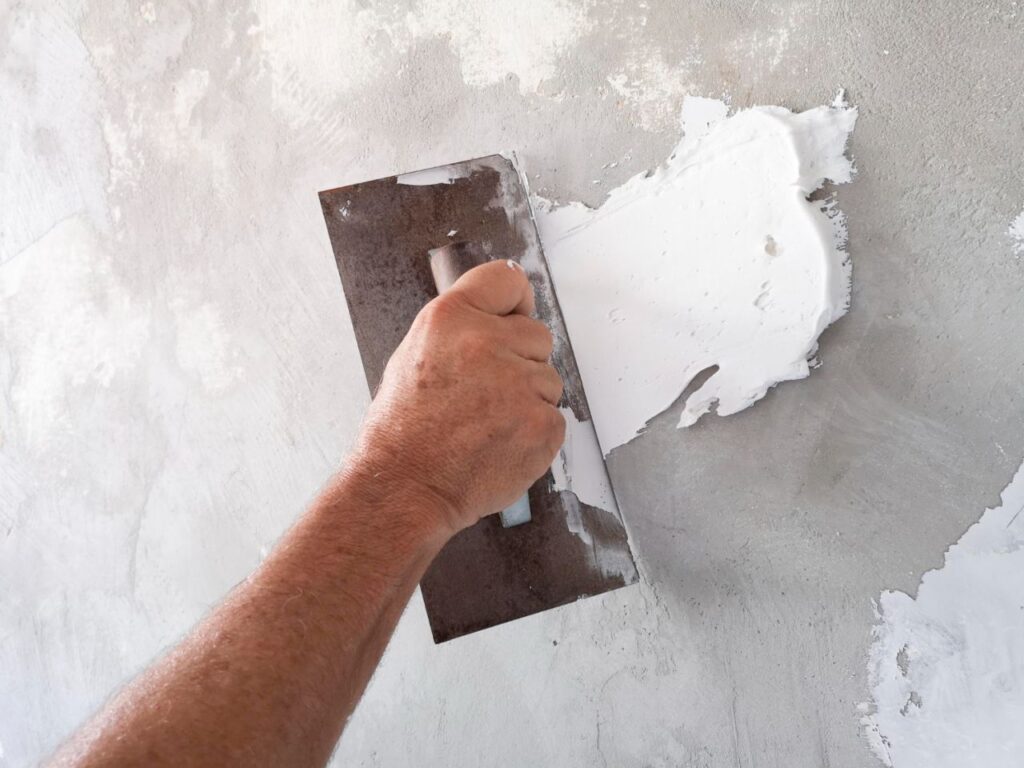Cracks in plaster might seem small, but they’re often a sign of bigger issues hiding beneath the surface. Whether it’s dodgy workmanship, rapid weather shifts, or buildings settling on Melbourne’s reactive clay soils, these cracks don’t show up for no reason. Over the years, I’ve seen everything from fine hairlines in new units to major blowouts in century-old terrace homes. The good news? Most cracks can be avoided with the right prep, materials, and reinforcement. But you’ve got to plan for movement, not hope it won’t happen. That’s where environmental control and solid structure come into play—and they matter just as much as what you slap on the wall.
The Real Reasons Behind Plaster Cracks
1. Building Movement and Foundation Settling
Every building moves. Doesn’t matter if it’s a new townhouse in Point Cook or a 1950s brick veneer in Essendon—gravity and time get their way.
- New builds often settle during the first 12–24 months. You’ll get hairline cracks above doorways, windows, or where the slab’s shifted.
- In older homes, timber frames shrink, and joints open up. It’s not always structural—but the plaster doesn’t forgive that sort of flex.
I once had a client in Ascot Vale ring me six months after a reno—her lounge room wall had a zigzag crack from skirting to cornice. Turns out the concrete slab hadn’t fully cured before they started internal work. Rushed job. Cost her double to fix.
Pro tip: For any fresh build or major reno, leave plastering until the structure has had time to settle. No shortcuts.
2. Temperature Swings and Humidity Trouble
Melbourne’s weather is all over the place. You can get a 40-degree day followed by a thunderstorm and a cold change in the same arvo. And that’s hell for plaster.
Plaster expands and contracts with heat and moisture. Add high humidity or sudden dry air into the mix and cracks show up fast.
- In winter, homes trap moisture—especially if the plaster goes up before the roof’s watertight.
- In summer, if you’re working in full sun or wind, the plaster dries too fast and pulls itself apart.
I’ll never forget a ceiling job we did in Coburg where the apprentice left a dehumidifier running overnight to “speed things up.” Came back the next day and the ceiling had spider-webbed like crazy. Lesson learnt.
3. Poor Mixing or Bad Technique
This one’s simple: if you muck up the mix, you’re asking for trouble.
- Too much water makes the mix weak and prone to shrinkage.
- Too much sand and it turns brittle.
- Add water after the mix starts going off? It weakens the chemical bond.
- Throw it on too thick in one go? You’ll trap air or moisture, and it won’t cure right.
I’ve patched up jobs where the plaster had delaminated so badly, you could peel it off like a banana skin. Nine times out of ten, it’s either a dodgy mix or slapped on in one go without curing between coats.
4. External Impact and Everyday Vibes
Not all cracks are about moisture or movement—some are just daily wear and tear.
- Bumping a wall with a chair leg.
- Hanging a heavy mirror without proper anchors.
- Kids roughhousing indoors (yes, I’ve patched dents shaped like a cricket bat).
And don’t underestimate external vibrations. If you’re near a train line, tram route (hello, Brunswick), or construction zone, even small, regular tremors can create stress points in plaster. Over time, it shows up as diagonal hairline cracks or separation along joints.

What Happens If You Ignore Hairline Cracks?
Hairline cracks might seem harmless at first—just a bit of touch-up and paint, right? Wrong. Ignore them and you’ll be back every year with a new set of problems.
Here’s what they lead to:
|
Problem |
What It Causes |
|
Water ingress |
Stains, bubbling, and eventually mould |
|
Poor adhesion |
Paint won’t stick or flakes off |
|
Widening cracks |
Structural risk and bigger repairs later |
|
Visual flaws |
Makes even new work look old and unfinished |
I’ve had clients in Hawthorn who painted over fine cracks during a DIY paint job. Six months later, those same cracks re-opened—wider—and let moisture in. By the time we got to it, the whole top coat had to be stripped and redone. Cost them three times what it would’ve taken to fix properly the first time.
Why Plaster Cracks and How to Stop It Before It Starts
Plaster cracks aren’t just ugly—they’re a dead giveaway something was missed, rushed, or poorly planned. I’ve been walking into Melbourne homes for over two decades—whether it’s a Federation place in Fitzroy or a slick new build in Glen Waverley—and cracked walls always tell a story. Sometimes it’s movement. Sometimes moisture. Sometimes the bloke before you just didn’t know what he was doing.
But here’s the truth: cracks don’t happen without a reason. And once you understand what’s behind them, stopping them becomes a hell of a lot easier.
6 Essential Steps to Prevent Plaster Cracks
There’s no magic product or miracle tape that stops plaster from cracking. What does the trick? Doing it right from the start. It’s not rocket science—it’s just experience, proper prep, and not cutting corners. You follow the right steps, you’ll get walls that hold up for years. Skip them, and you’ll be back with filler and sandpaper before the paint’s even dry.
Let’s break down the six steps I’ve used on thousands of jobs across Melbourne—whether it’s a patch-up in Preston or a full re-sheet in South Yarra.
1. Nail the Wall Prep Before You Plaster
I’ve seen more plaster fail because of poor prep than any other reason. You could be using the best gear money can buy, but if the wall underneath is filthy, flaky, or sucking moisture too fast—your plaster doesn’t stand a chance.
Here’s the basic prep checklist I swear by:
|
Task |
What to Do |
|
Clean the surface |
Wash with sugar soap. Remove grease, oil, or paint flakes. |
|
Tap test |
Use the back of your knuckles to check for hollow sounds—drummy sections need to be hacked off. |
|
Damp the wall |
On hot days, lightly hose or mist the surface. Dry bricks will suck water out of your mix fast. |
|
Apply bonding agent |
Use PVA (3:1 water mix) or Blue Grit depending on the surface. Don’t skip this. |
2. Mix It Right or Watch It Fail
Bad mix = bad result. Doesn’t matter how good your trowel work is. You muck up the plaster ratio and you’re building problems straight into the wall.
Golden rules of mixing:
- Stick to the ratio. If it’s 1 part cement to 5 parts sand (for cement render), follow it. Don’t freestyle it.
- Use clean water. Dirty water = contaminated mix. Don’t use water from an old paint bucket or dusty drum.
- No late water. Once it starts setting, adding water might make it workable—but it ruins the chemical bond.
- Use a proper mixer. Mixing by hand doesn’t cut it if you want consistency. A drill and paddle or forced action mixer is best.
3. Control the Drying Time
This one catches heaps of newbies out—especially in Melbourne’s unpredictable weather. You don’t want it drying too fast or too slow. You want even, natural drying.
Don’t:
- Plaster in direct sunlight
- Use heaters or fans to rush drying
- Leave windows wide open on a windy day
Do:
- Work early mornings during summer
- Shade west-facing walls if needed
- Keep windows cracked open for airflow—no gusts
Drying Timeline (General Guide):
|
Plaster Type |
Time Before Next Coat |
|
Base coat or bonding |
24–48 hours |
|
Multi-finish |
5–7 days |
|
Lime plaster |
2–4 weeks (yes, seriously) |
I remember a job in Dandenong—we plastered a ceiling just before a hot front came through. Next day, it looked like someone had run a rake across the surface. Shrinkage cracks everywhere. We had to float it again. Now, we always check the forecast.
4. Apply in Layers, Not One Big Lump
Too many people try to knock out plastering in one big go. They throw on 10mm of mud at once, hoping it’ll dry smooth and solid. It won’t. You’ll get bubbles, cracks, and flaking. Good plastering takes layers—and patience.
Layering process:
- Scratch coat – First coat to key into the wall. Rough finish for grip.
- Float coat – Second coat to build thickness. Leveled with a straight edge.
- Finish coat – Thin top coat for smoothness.
Let each one fully dry before starting the next. Rushing causes separation or cracks later on.
5. Use Plastering Joint Tape and Mesh Where Needed
If you’re plastering over joints, cracks, or around new framing—you’ve got to reinforce. Otherwise, even the slightest flex will tear through your finish coat like paper.
Reinforcement options:
|
Type |
Where to Use |
Details |
|
Skrim tape |
Over plasterboard joints |
Self-adhesive, embeds in base coat |
|
Fibreglass mesh |
Large surface areas or existing cracks |
Distributes stress evenly |
|
Chicken wire / metal lath |
Over uneven brickwork or areas prone to movement |
Fixed every 4–5 feet, especially around doors/windows |
|
Flexible joint tape |
Along ceilings, old cracks, timber junctions |
Absorbs minor movement, ideal for renos |
6. Install Expansion Joints in Large Areas
Got a big wall or ceiling? It’s going to move—guaranteed. Long stretches of plaster need room to breathe. That’s where expansion joints and control profiles come into play.
Where we use expansion/control joints:
- Every 5–6 metres on big internal walls
- Junctions between different substrates (e.g. plasterboard to brick)
- Around structural columns or ceiling beams
- Door and window corners (upper diagonals are stress points)
If you’ve ever noticed a long hairline crack stretching across the middle of a wall, chances are it needed a joint—and didn’t get one.
Profile Options from VWS (used on commercial and higher-end residential jobs):
|
Profile Type |
Application |
Purpose |
|
Shadow joint (Art. no. 152000) |
Ceiling-to-wall transitions |
Allows subtle flex, prevents ceiling cracks |
|
Movement joint (Art. no. 153300) |
Long stretches of plastered wall |
Absorbs movement, keeps joints clean |
|
Reveal profile (Art. no. 160300) |
Around windows/doors |
Prevents cracks and stops moisture |
|
End profile (Art. no. 156600) |
Renovations between old/new walls |
Creates neat finish and protects joins |
We used these on a new childcare centre in Craigieburn. Long corridor walls with HVAC above—plenty of flex. Without movement joints, that job would’ve cracked like a cheap teacup. But with them? Still spotless 18 months on.

